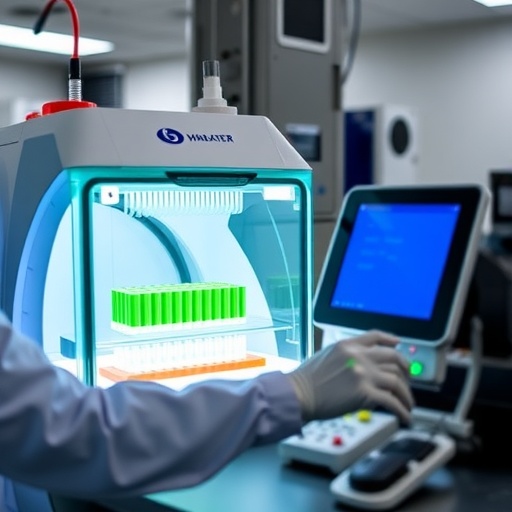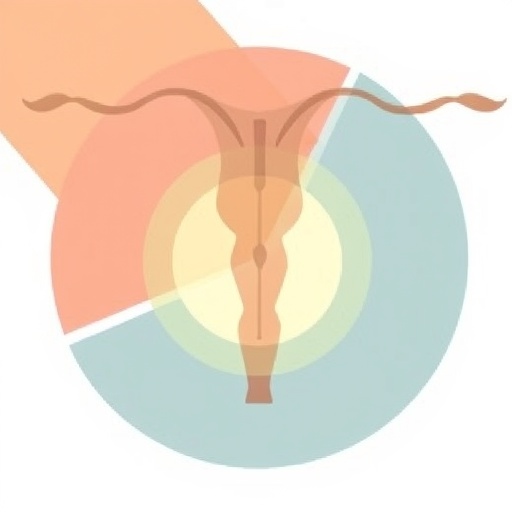PROTECT YOUR DNA WITH QUANTUM TECHNOLOGY
Orgo-Life the new way to the future Advertising by Adpathway
In a groundbreaking study that is poised to transform the landscape of spatial transcriptomics, researchers led by Dr. Xiaolong Yang have developed Spatialsmooth, an innovative framework that utilizes a spatially-aware convolutional autoencoder for the enhanced deconvolution of spatial transcriptomics data. This pivotal advance sweeps away the conventional limitations faced by researchers in accurately interpreting complex spatial bioinformatics data and addresses the pressing need for sophisticated analytical tools that can keep pace with the rapid advancements in transcriptomic technologies.
Spatial transcriptomics has emerged as a revolutionary technique that allows scientists to analyze gene expression patterns within the unique architecture of tissues. However, one major hurdle has been the inherent challenge of deciphering the intricate spatial organization of transcriptomic data. Traditional methods often fall short, yielding results marred by noise and inaccuracies that can obscure essential biological insights. Enter Spatialsmooth—designed specifically to combat these challenges, this new framework aims to refine the power of spatial transcriptomics, allowing for a clearer and more reliable interpretation of the underlying biological phenomena.
The core innovation of Spatialsmooth lies in its convolutional autoencoder architecture, which allows for a nuanced delineation of spatial patterns from transcriptomic data. By harnessing deep learning techniques, the framework can discover previously hidden structural features in spatial data, while maintaining the fidelity of gene expression states. This capability is crucial, as the inherent complexity and high-dimensional nature of such data often leads to significant analytical hurdles. With Spatialsmooth, researchers are equipped with a versatile tool that can dramatically enhance the interpretative clarity of spatial omics.
To illustrate the operational efficiency of Spatialsmooth, the design incorporates a series of advanced algorithms that take advantage of spatial information embedded within the gene expression data. This strategic utilization of spatial relationships empowers users to apply decorrelated and de-noised representations to their datasets, making it possible to pinpoint gene expression changes with high spatial resolution. As areas of study continue to delve deeper into tissue heterogeneity, such clarity becomes indispensable for deriving biologically relevant conclusions.
The potential applications of Spatialsmooth stretch across a wide spectrum of fields, from cancer biology to neurogenetics. For example, in oncology, understanding the spatial distribution of tumor markers can dramatically influence therapeutic strategies and prognostic outcomes. Similarly, within neurogenetics, detailed insights into the spatial expression patterns of genes involved in neurological disorders can illuminate pathways for potential therapeutic interventions. The implications of this framework reverberate through multiple disciplines, highlighting its necessity in modern biological research.
Another significant aspect of Spatialsmooth is its user-friendly interface, which democratizes access to advanced bioinformatics tools for a wider range of researchers. This accessibility can foster interdisciplinary collaboration, bridging gaps between computational scientists and biologists who may not have extensive experience in bioinformatics. By simplifying the process of data deconvolution with a robust, yet pliable framework, Spatialsmooth sets itself apart as a vital resource for those seeking to explore the complexities of spatial gene expression without getting bogged down in technical intricacies.
In a rapidly evolving research environment, collaboration is key, and the creators behind Spatialsmooth acknowledge the importance of community contributions to refine and optimize their framework. They encourage feedback and shared insights from researchers who employ the tool, establishing a feedback loop that promotes continuous enhancement of the algorithm. This iterative process not only improves the framework but also helps adapt it to the ever-changing landscape of spatial transcriptomics.
Dr. Yang and his team assert that the adoption of Spatialsmooth will catalyze new research avenues and invigorate existing studies, ultimately enriching our understanding of the molecular underpinnings of diseases at a spatially resolved level. As spatial transcriptomics continues to gain traction, Spatialsmooth stands out as a harbinger of the next wave of analytical advancements in the field.
A critical component of the research also centers around the rigorous validation of Spatialsmooth with benchmark datasets. The researchers conducted exhaustive tests comparing the performance of their autoencoder against existing deconvolution methods, showcasing a marked improvement in accuracy and resolution in detecting gene expression patterns. Such validation reinforces the reliability of Spatialsmooth and establishes it as a trusted tool for researchers venturing into spatial omics.
As the realm of spatial biology expands, the role of artificial intelligence and machine learning is proving to be indispensable. Spatialsmooth embodies this trend, presenting a confluence of computational sophistication and biological relevance that could soon become the standard in spatial transcriptomic analysis. With a robust framework that anticipates the needs of a diverse research community, Spatialsmooth is set to unlock new insights into the complex interplay between spatial organization and gene expression.
Looking ahead, it is clear that Spatialsmooth not only represents a significant technological milestone but also paves the way for a paradigm shift in our approach to biological data analysis. By providing researchers with the ability to decode spatially resolved gene expression in unprecedented detail, it fuels hope for breakthroughs in personalizing medicine and understanding the basis of many diseases. The innovative spirit behind Spatialsmooth serves as a clarion call for future explorations in spatial transcriptomics, inviting a new generation of scientists to embrace the potential of this powerful analytical tool.
As we stand on the cusp of this new era in spatial genomics, the impact of Spatialsmooth may well stretch beyond its immediate applications. By setting a new standard in the analysis of spatial transcriptomics data, it encourages scientists to think critically about the relationships between spatial cues and biological function, ultimately driving progress in computational biology. In this way, the narrative of Spatialsmooth is not merely about technology; it is about the relentless pursuit of knowledge and the desire to unlock the complexities of life at a molecular level.
This innovative framework marks a significant step forward in our quest to understand the spatial dimensions of gene expression, promising to enrich the scientific landscape with tools capable of illuminating the hidden intricacies of biology. As researchers around the world harness the power of Spatialsmooth, it is plausible that we will witness transformative advancements that will redefine our comprehension of health and disease.
In conclusion, Spatialsmooth emerges as not just a tool, but as a beacon in the evolving field of spatial transcriptomics, urging scientists to probe deeper into the fabric of life, unraveling the stories that exist within the spatial arrangements of genes. It invites researchers across various domains to fully engage with the data at their disposal, using the insights gleaned to propel forward our understanding of the biological world, encouraging scientific innovation and discovery in ways previously thought unattainable.
Subject of Research: Spatial transcriptomics data analysis
Article Title: Spatialsmooth: a spatially-aware convolutional autoencoder framework for enhanced deconvolution of spatial transcriptomics data
Article References:
Yang, X., Xiang, J., Feng, Y. et al. Spatialsmooth: a spatially-aware convolutional autoencoder framework for enhanced deconvolution of spatial transcriptomics data.
BMC Genomics 26, 791 (2025). https://doi.org/10.1186/s12864-025-11959-2
Image Credits: AI Generated
DOI:
Keywords: Spatial transcriptomics, convolutional autoencoder, data deconvolution, bioinformatics, deep learning, gene expression, spatial biology
Tags: advanced transcriptomic technologiesbiological insights from spatial datachallenges in spatial transcriptomicsconvolutional autoencoder frameworkdeconvolution of spatial datadeep learning in transcriptomicsenhanced analytical tools for researchersgene expression patterns in tissuesnoise reduction in bioinformaticsspatial bioinformatics innovationsspatial transcriptomics analysistransforming spatial data interpretation


 12 hours ago
16
12 hours ago
16





















 English (US) ·
English (US) ·  French (CA) ·
French (CA) ·